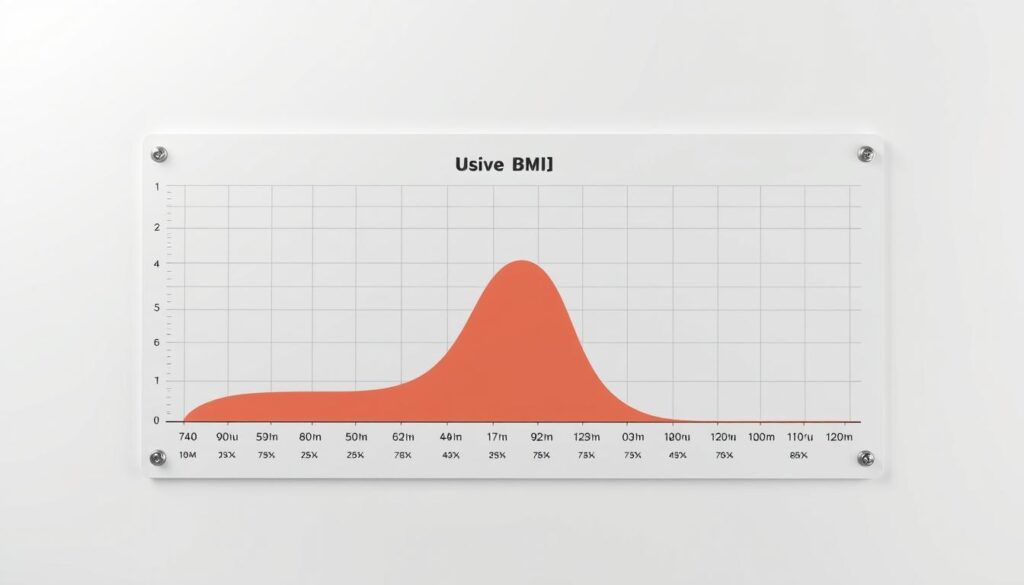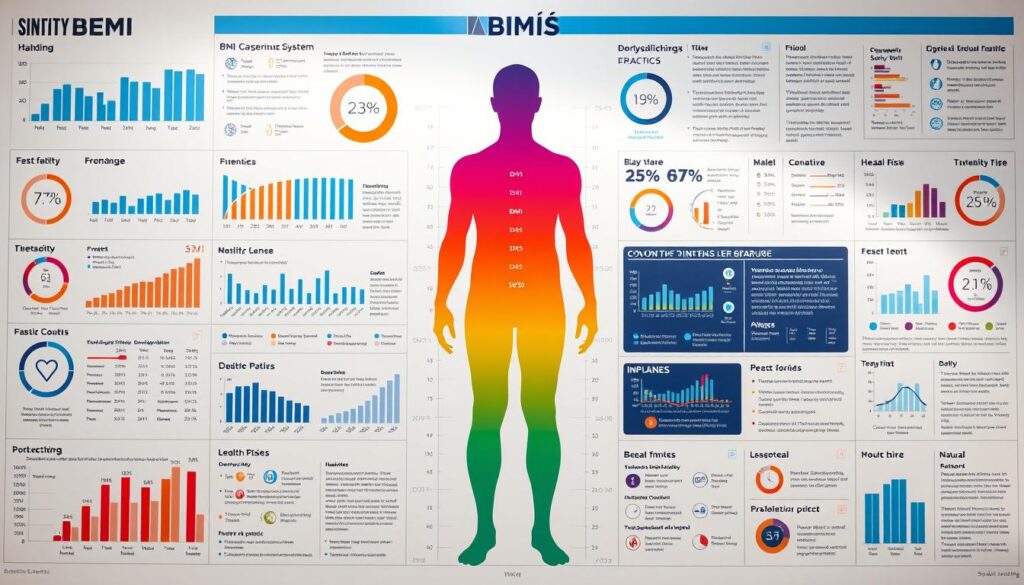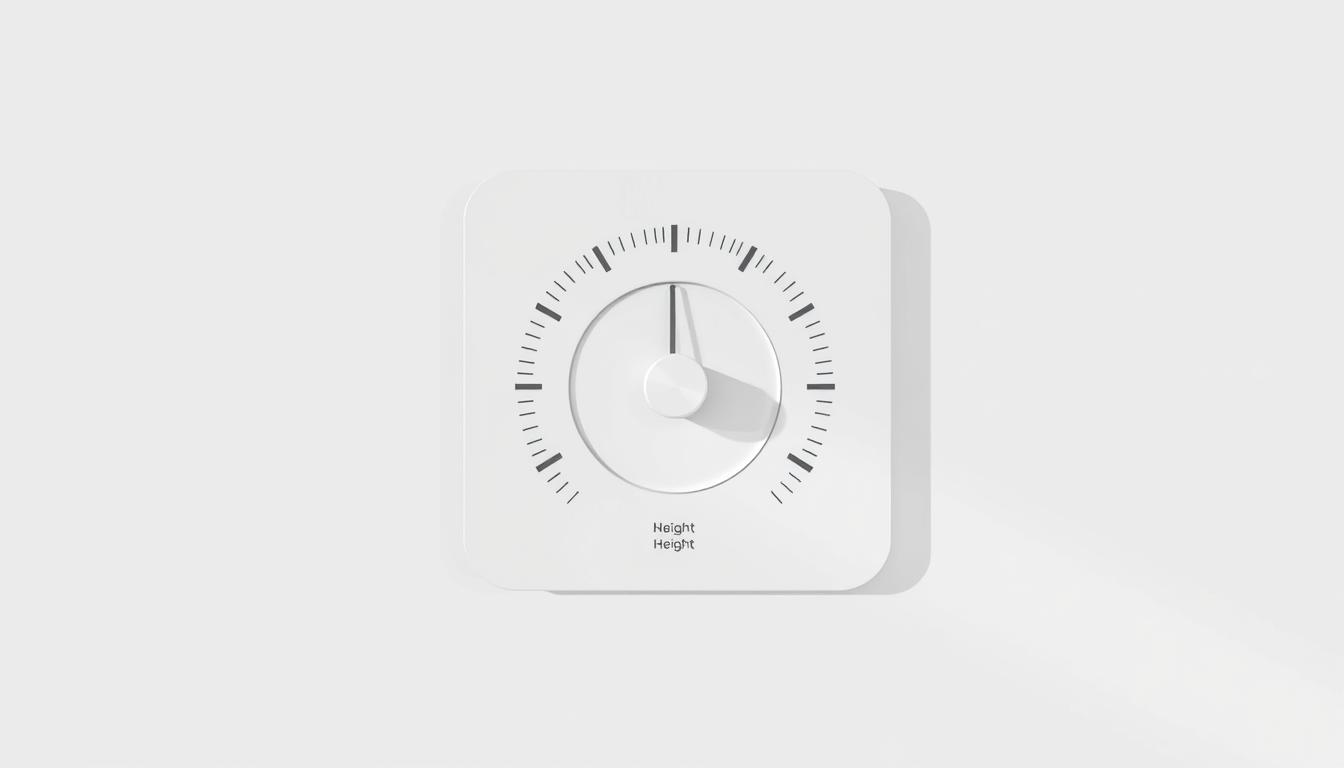Many people assume stepping on a scale tells them everything they need to know about their well-being. But what if there’s a smarter way to understand your body’s unique needs? Our tool goes beyond basic measurements to help you uncover hidden insights about your physical health.
This resource evaluates your body mass index—a simple formula using your height and weight. A result like 23 kg/m² falls within the healthy range (18.5–25 kg/m²), but numbers alone don’t paint the full picture. That’s why we’ve designed our solution to analyze multiple factors, including age and body composition, in both metric and US units.
Beyond standard calculations, this tool also examines indices like the Ponderal Index. These metrics help identify risks that basic measurements might miss. Whether you’re tracking progress or starting a wellness journey, understanding these numbers empowers better decisions.
Key Takeaways
- Body mass index offers a quick snapshot of health risks linked to weight.
- Healthy ranges vary by age and body type, especially for growing children.
- Our tool calculates results using both pounds/kilos and feet/inches for flexibility.
- Additional metrics like the Ponderal Index provide deeper insights than BMI alone.
- A result of 23 kg/m² indicates a balanced ratio of mass to height.
Understanding BMI and Healthy Weight
While numbers on a scale provide basic information, they don’t capture the full story of physical health. Health professionals rely on tools like the body mass index to assess how weight relates to height—a critical step in identifying potential health risks. Let’s explore how this measurement works and why it matters.
What Is Body Mass Index?
The body mass index calculates body fat indirectly using a simple formula: weight divided by height squared. The World Health Organization categorizes results into four ranges:
- Under 18.5: Underweight
- 18.5–24.9: Healthy weight
- 25–29.9: Overweight
- 30+: Obese

For children and teens, the CDC uses growth charts comparing results to peers of the same age and sex. A 12-year-old in the 75th percentile, for example, has a higher mass index than 75% of their age group.
The Role of BMI in Assessing Body Mass
This measurement serves as a screening tool—not a diagnosis—for weight-related health risks. Research shows higher body fat levels correlate with increased chances of heart disease and diabetes. However, muscle-heavy athletes might show elevated numbers despite low fat percentages.
“BMI provides a standardized way to identify potential weight issues, but it’s just one piece of the health puzzle.”
We recommend pairing these results with waist measurements and blood tests for a complete picture. Our next sections will detail how advanced tools analyze these factors together.
How Our BMI Calculator for Overweight Empowers Your Health
Standard health tools often oversimplify body composition. Our enhanced analysis combines three metrics to reveal what basic calculators miss. You’ll discover how muscle distribution, bone density, and fat percentage interact through personalized reports.

Three-Step Precision Analysis
We gather four key details: birth year, gender identity, and measurements in pounds/feet or kilos/meters. The system automatically converts units using 703 as the USC multiplier and 1 for metric calculations. A 160-pound adult at 5’10” receives:
- Body mass index: 23.0 (healthy range)
- BMI Prime: 0.92 (ideal = 1.0)
- Ponderal Index: 12.3 kg/m³ (standard: 11–14)
Beyond Basic Numbers
BMI Prime compares your result to population averages—0.8–1.2 indicates balanced mass distribution. The Ponderal Index evaluates leanness, particularly useful for taller individuals. Together, these metrics identify hidden risks like uneven fat storage patterns.
Our interactive platform color-codes results against WHO standards. Green zones suggest optimal body weight, while orange/red flags potential concerns. This multi-angle approach helps athletes, parents, and older adults make informed choices.
Next, we’ll explore how these findings connect to heart health and practical wellness strategies.
Recognizing Health Risks and Achieving a Healthy Weight
Carrying extra pounds impacts more than clothing sizes—it quietly strains vital systems. Research shows excess body fat acts like an endocrine organ, releasing hormones that disrupt metabolic balance. This imbalance raises vulnerability to life-altering conditions, even when outward symptoms seem mild.
Hidden Threats of Excess Mass
Elevated mass index scores correlate with multiple health challenges. The National Heart, Lung, and Blood Institute identifies these primary risks:
- Heart disease: Fat deposits narrow arteries, forcing the heart to work harder
- Type 2 diabetes: Excess weight reduces insulin sensitivity
- Certain cancers: Breast, colon, and kidney cancers show stronger links to obesity
Other concerns include osteoarthritis from joint stress and sleep apnea caused by airway pressure. Even a 5% weight reduction can lower high blood pressure risks by 20% in adults.
Building Sustainable Habits
Combining smart nutrition with activity creates lasting change. Try these CDC-backed strategies:
- Swap sugary drinks for water—cut 150+ empty calories daily
- Walk 30 minutes daily—burns 150 calories while boosting mood
- Track progress weekly using our interactive mass index tool
“Focus on consistency over perfection—small daily improvements compound into major results.”
Remember, numbers like BMI provide guidance but don’t measure overall wellness. Pair them with waist measurements and energy levels for a complete picture. Our final section will summarize key steps to maintain your ideal body weight long-term.
Conclusion
Understanding your body’s needs requires more than guesswork—it demands precise tools and actionable insights. Our BMI calculator for overweight individuals helps decode body mass index alongside advanced metrics like BMI Prime and the Ponderal Index. These combined analyses reveal risks standard tools might overlook, from uneven fat distribution to early signs of heart disease or type 2 diabetes.
Maintaining a healthy weight involves balancing nutrition, activity, and regular health checks. Elevated body fat percentages correlate with serious conditions like certain cancers and high blood pressure. For personalized guidance, pair our tool’s results with professional medical advice.
Explore targeted weight management strategies that align with your unique body composition. Whether you’re tracking progress or setting new goals, knowledge transforms numbers into meaningful health decisions.
Take charge today—measure smarter, act wiser, and build habits that last.


